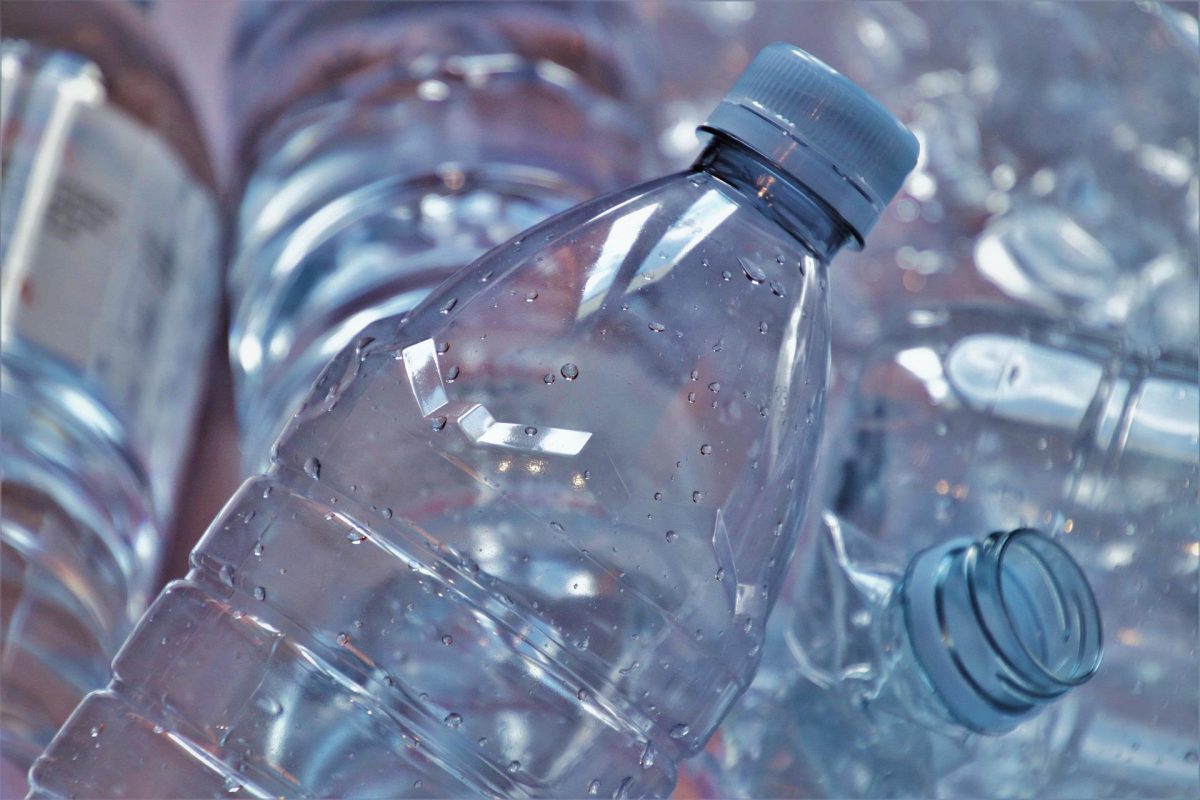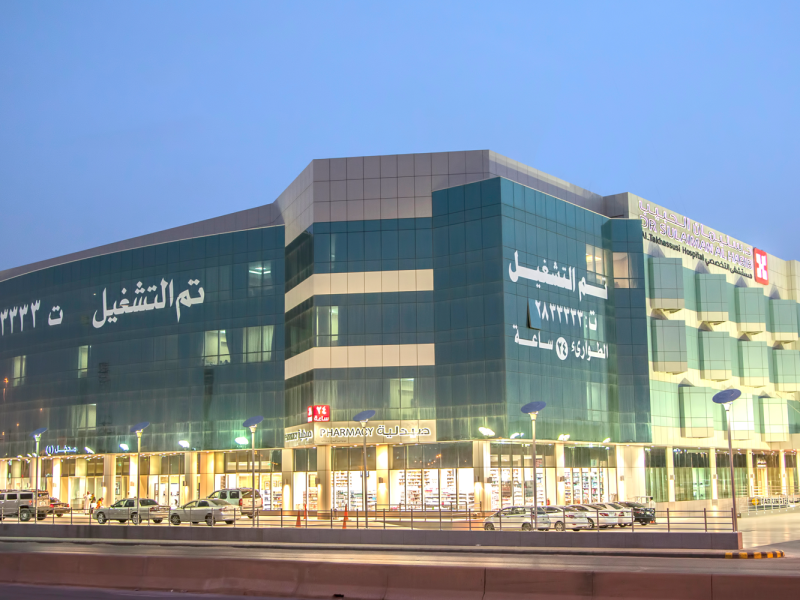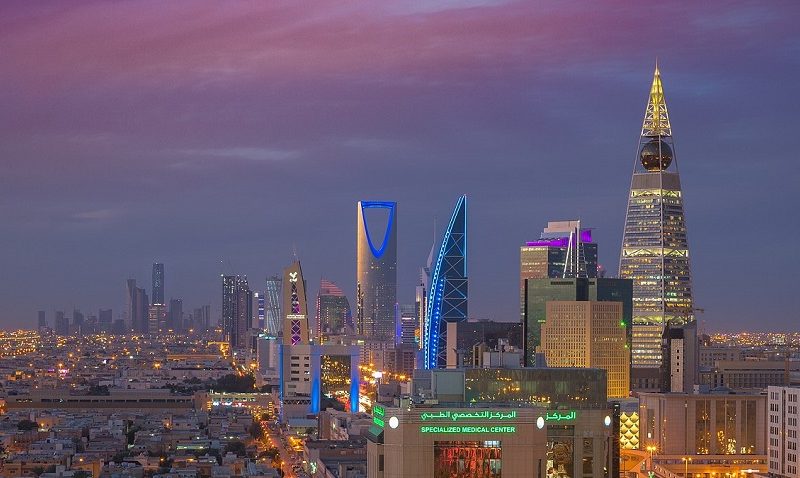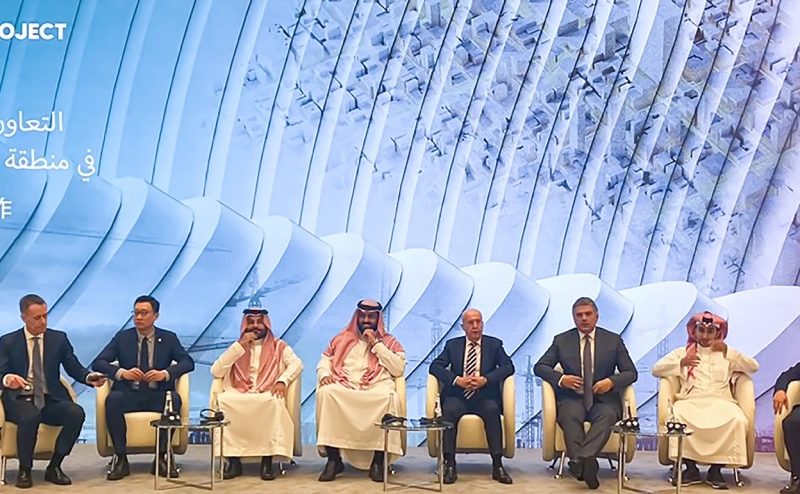Aramco engineers are using recycled plastic bottles to create road building materials as part of a wider push to reduce the carbon footprint of the construction industry.
Plastic from cups, bottles, and packaging is added to asphalt in an effort to produce a more durable road surface that requires less maintenance compared to traditional construction methods.
It is among several innovative building techniques which the company is exploring as it works toward its ambition of achieving net-zero Scope 1 and Scope 2 greenhouse gas emissions across its wholly-owned operating assets by 2050.
The recycled material has already been trialled on new roads in Hawiyah and the King Salman Energy Park in Saudi Arabia’s Eastern Province and in other company facilities.
This underscores the advances being made by Aramco in the construction sector, which could potentially help decarbonise practices, and in some cases improve the performance of materials.
Construction represents 13% of the global economy and is a major contributor to carbon dioxide (CO2) emissions, with concrete production alone accounting for 8% of those emissions. Second only to water, concrete is the most consumed material, with some three tons per year used for every person in the world.
Such consumption shows why construction practices may be pivotal to the success of net-zero ambitions by companies and countries, as the global energy transition also ushers in a corresponding materials transition.
Advances in road building technology coincide with Aramco’s focus on non-metallics used in construction in applications such as rebar, cladding, and soil stabilisation.
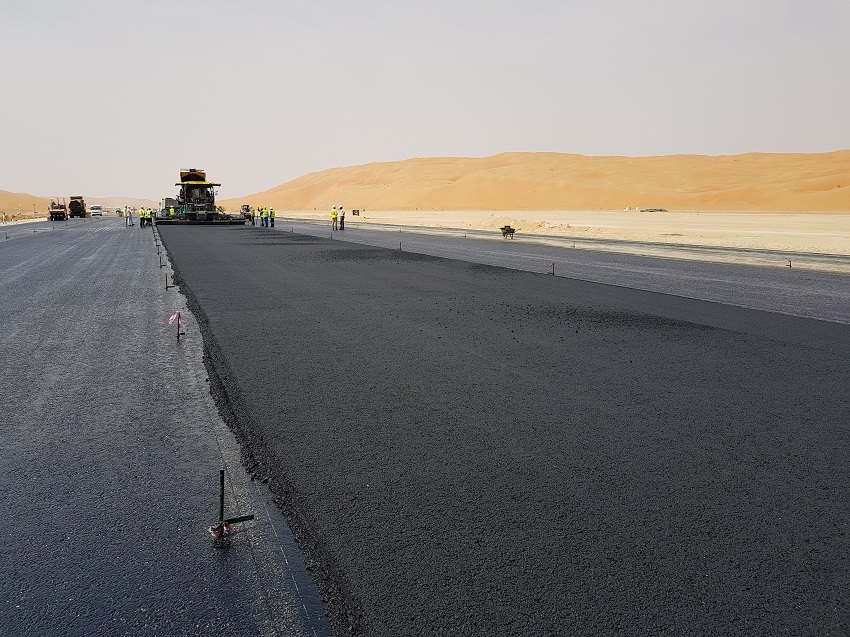
Innovation at Aramco
Aramco is exploring a number of new techniques involving concrete and asphalt that include the sequestration of CO2 in construction materials, from blocks to precast structures.
Aramco also collaborates with academic institutions such as King Fahd University of Petroleum and Minerals (KFUPM) in technical studies that explore how to maximize the use of recycled plastic and rubber in concrete.
These initiatives highlight how the company can forge new pathways to a lower-emissions future beyond the wellhead.
We recently established centres of excellence in the US and China for non-metallics in the building and construction industry with the goal of improving the sustainability of building materials and contributing to the circular carbon economy.
The carbon footprint associated with concrete and asphalt may also be reduced by using industrial waste in the construction of civil engineering infrastructure instead of quarrying new materials, which involves using emissions-intensive heavy machinery.
Using specially developed additives can also help. Road construction has long involved the process of heating asphalt-mix ingredients to make them vicious enough to bind with aggregates before transporting and laying the mixture on the roadbed. More than 80%of the CO2 emissions produced from laying asphalt roads come from heating the mixture.
By using additives such as recycled plastic, it could be possible to lower the viscosity of the material so that it can be mixed at between 15 and 30 degrees centigrade below the normal temperature, requiring less energy and reducing emissions.

Road surfaces built in this way also last longer because the initial oxidation of the bitumen is reduced, which makes it more resistant to UV radiation and so longer-wearing.
Foamed asphalt is another material that can improve road strength and reduce moisture susceptibility. By combining bitumen with small amounts of cold water, foam is produced with 10 times more coating potential than an asphalt binder in its normal liquid state.
Notably, it can be compacted and carry traffic almost immediately, while at the same time requiring less energy because only the bitumen is heated in mixing the aggregates. In fact, this technique was deployed by the company for the first time in the 1990s during the construction of the Shaybah field where an existing pavement was upgraded using foam asphalt technology.
Additionally, adding nano polymers to the road base can improve the quality of highway sub-bases by increasing strength and durability when used in conjunction with cement.
Aramco engineers are also studying the suitability of using bundled recycled tires to form road embankments which make for much less expensive construction in locations that require soil stabilization.
Elsewhere, the company has deployed supplementary cement materials such as natural pozzolan (volcanic ash) and fly ash as a partial replacement that also offers additional durability benefits.
Meanwhile, a number of pilot studies of different emerging concrete technologies are being conducted.
One involves using a lightweight pre-cast curb made with polymers and concrete. The curb is designed with slots so that it doubles as a drain to carry water away from the road surface.
Another pilot project uses ‘CarbonCure’ technology to introduce CO2 into fresh concrete to lower the required cement content, a process known as mineralization.
These emerging road construction materials and technologies reflect Aramco’s culture of innovation and support its strategy to implement a circular carbon economy model which focuses on reducing, reusing, recycling and removing carbon dioxide emissions from assets to develop more sustainable energy systems.
They demonstrate that there are not only multiple ways to reduce emissions, but also illustrate the innovative thinking that has the potential to transform how we build.

